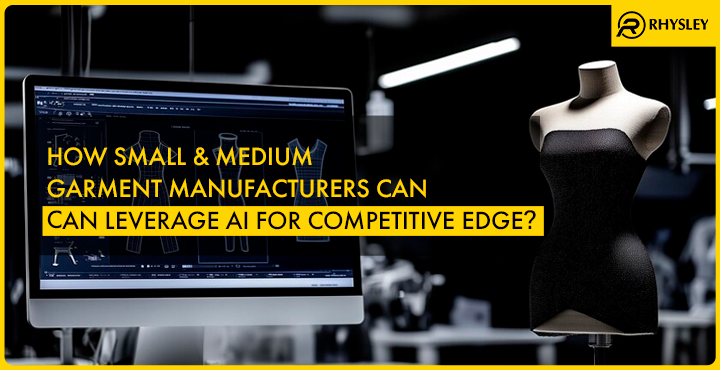
How Small & Medium Garment Manufacturers Can Leverage AI for Competitive Edge
The global apparel market is expected to reach $2.25 trillion by 2025, with the integration of AI in the textile industry projected to grow at a remarkable 40% annually.
Despite this growth, small and medium garment manufacturers often find it difficult to compete with larger brands that have the resources to invest in cutting-edge technology.
However, the rise of affordable and scalable AI solutions is leveling the playing field, enabling smaller businesses to enhance operational efficiency, reduce waste, and improve product quality.
By integrating AI tools into garment production, small and medium-sized enterprises (SMEs) can streamline their processes and position themselves for success in a rapidly evolving industry.
AI offers smaller manufacturers a chance to innovate without the hefty price tag. From predictive analytics to automated workflows, these tools empower businesses to make data-driven decisions and optimize their operations.
By leveraging AI, small and medium garment manufacturers can not only keep up with industry giants but also differentiate themselves, ensuring a stronger foothold in the competitive apparel market.
How Small Manufacturers Can Use AI in Garment Production
AI is now accessible to businesses of all sizes, not just large corporations. Today, affordable and scalable AI tools are accessible to small and medium garment manufacturers. Here’s how they can integrate AI into their operations:
Automated Quality Control
Advanced AI vision systems identify imperfections in fabrics and garments with exceptional accuracy, elevating quality standards in manufacturing.. These systems utilize machine learning algorithms to identify inconsistencies, thereby ensuring higher quality standards while minimizing manual labor.
Predictive Maintenance
AI can monitor machinery and predict when equipment is likely to fail. By addressing issues before they escalate, manufacturers can avoid costly downtime and extend the lifespan of their machines.
Demand Forecasting
AI tools analyze historical sales data, market trends, and consumer behavior to predict future demand. This helps manufacturers optimize inventory levels, reduce waste, and produce only what’s needed.
Pattern Making and Design Optimization
AI-driven software can create patterns and optimize designs for minimal fabric waste. This not only saves material costs but also speeds up the design process.
Read More: How Artificial Intelligence is Improving Quality Control in the Garment Industry
Improving Garment Manufacturing Efficiency with AI
Production Line Optimization
AI-powered scheduling tools can optimize workflows, ensuring efficient use of labor and machinery. This results in faster turnaround times and improved productivity.
Predictive Maintenance
AI monitors equipment performance and predicts maintenance needs before breakdowns occur. This reduces unexpected downtime and increases overall production efficiency.
AI-Powered Supply Chain Management
By analyzing global supply chain data, AI tools enable manufacturers to identify cost-effective raw materials and alternative suppliers, ensuring smooth operations even during disruptions.
Competitive Advantage with AI in the Apparel Industry
Personalized Customer Experience
AI-driven analytics provide insights into customer preferences, enabling manufacturers to tailor their products to meet market demands. This increases customer satisfaction and brand loyalty.
Sustainability and Waste Reduction
AI helps reduce fabric waste by optimizing cutting layouts and recommending sustainable materials. This not only saves costs but also appeals to eco-conscious consumers.
Faster Time to Market
With AI-driven automation, small manufacturers can respond quickly to fashion trends, reducing lead times and competing effectively with larger brands.
Conclusion
AI for small garment manufacturers is no longer a luxury but a necessity for survival in the modern apparel industry. Cost-effective AI solutions for the textile industry can improve efficiency, reduce waste, and enhance quality, ultimately giving businesses a strong competitive edge. Whether it’s through AI tools for garment production or supply chain optimization, integrating AI can transform the way small and medium-sized clothing manufacturers operate in today’s fast-paced market.